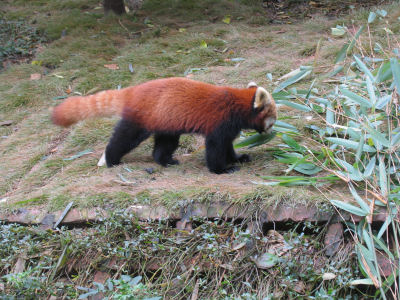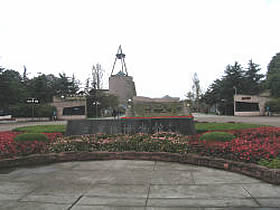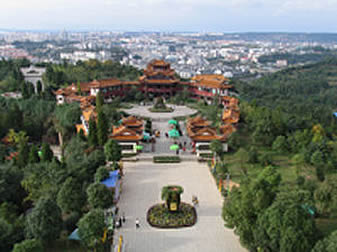

A Delightful Sojourn In The Land Of The Giant Panda
Pg 1
 |
From all my travels, I consider Sichuan as the most fascinating tourist destination in China and the world at large. In Sichuan, there are many unique and scenic landscapes, the ancient irrigation project of over two thousand years that is still performing, former residences of renowned figures, the giant Pandas, ancient Buddhist and Taoist temples and many more. Sichuan and its capital, Chengdu is known in China as “The Land of Abundance and “The Land of the Giant Panda”. |

Welcome!
Introduction
The name “Sichuan” means “Four streams”, and it refers to the four tributaries of the Yangtze River flowing through the province from north to south. Sichuan is well known for its natural landscapes, historical relics and ethnic customs. With its favorable climatic conditions, availability of vast arable plains for farming and numerous mineral resources, it has come to be known as “Land of Abundance”. Also, as more than eighty percent of Giant Panda are found in Sichuan it is also known as “Home of Giant Panda”. It has a population of about 90 million.
With a long history and splendid culture together with its beautiful landscapes, Sichuan has the following sites listed by UNESCO:
1. Listed in the World Natural Heritage sites are Jiuzhaigou Valley (the fairyland on earth) and Huanglong (Jasper lake in the mundane world);
2. Listed in the World Cultural and Natural Heritage site is The Giant Buddha of Leshan, a sacred site of Buddhism and
3. Listed in the World Cultural Heritage site is Dujangyan Irrigation Project.
With many other scenic areas, natural resources and parks, Sichuan has become one of the most fascinating tourist destinations in China and the world at large.
The capital of Sichuan is Chengdu which has a population of over 10 million. It is one of China’s key historical and cultural centers and has many tourism resources. It has also attracted many literary men and scholars like Du Fu (my ancestor?) and Yue Tao.
Sichuan Opera, one of the indigenous operas in China, originated, developed and continues to flourish in Chengdu.
Also, it is one of the birthplaces of China tea culture. And not surprisingly, Wuliangye, one of the most expensive grain wines in China is brewed in Chengdu. Also available here is the sister of Wuliangye, Wuliangchun, which is equally good but not too expensive.
In downtown areas there are a number of historical sites and relics such as Do Fu’s Thatched Cottage, Wangjiang’s Mausoleum, Jin Sha Ruins, Buddhist and Taoist tempers etc.
Chengdu has reasonably good roads and highways that connect to many main tourist attractions in Sichuang such as the Panda Reserves, Juizhaigou, Huanglong, Mt. Leshan, Mt. Emei and many others. Therefore Chengdu is the main tourist center in Sichuan.
Around and nearby Chengdu, there are vast fertile plains irrigated by Dujiangyan Irrigation Project and since ancient times Chengdu has been known as “Land of Abundance”. As it is also close to the Panda Reserves, it is also known as “The Hometown of Pandas”.
However the two given epithets do not give justice to Chengdu. Our tour guide, Tracy Qiu told us about life in Chengdu. She said Chengdu was not an ideal home for youngsters because in the Land of Abundance, there was a lot to eat especially rice. The youngsters tend to eat a lot of rice and soon they become “Fan Tong (Rice Container)” behaving like pandas which only eat and sleep! But Tracy said Chengdu would be ideal for the elderly as it was a good place to eat and relax like a panda!
Our Itinerary
Our 12-day private tour was booked through and arranged by Sichuan New Oriental International Travel Co. Ltd located in Chengdu. Throughout our tour, my wife and I traveled in a car with a driver and an English-speaking tour guide.
We arrived at Chengdu on 28th Oct and returned home on 8th Nov. We traveled to Jiuzhaigou by the mountainous Ring Road with an overnight stopover in Mianyang. We spent three nights in Jiuzhaigou, one night each in Wolong, Leshan and Emei. We returned to Chengdu on 6th Nov.
The places we visited along our journey were: Research Base of Giant Panda, Sanxindui Museum, the three valleys in Jiuzhaigou, Huanglong Valley, the Giant Panda Reserve in Wolong, Dujangyan Irrigation System, the Giant Buddha in Leshan and Mt. Emei.
When we returned to Chengdu we visited Du Fu’s Thatched Cottage, Wangjiang Park, Jin Sha Ruins and Qinyanggong Taoist Temper.
Journey from Chengdu to Mianyang
(29th Oct 07)
• Research Base of Giant Panda Breeding
This is situated in the northern suburb of Chengdu. There were about 40 pandas living in this semi-natural environment. Among them were some smaller red pandas. It was our first sight of pandas in close range. To know more about these rare animals there is Panda Museum to visit and video film to watch.


• Sanxingdui Museum in Guanghan
Sanxingdui (three-star piles) Museum is located about 40km from Chengdu. It is located at the site where the ancient Shu State was originally located. The Museum houses interesting relics unique to the Chengdu area.
The precious and exquisite cultural relics recovered from two sacrificial pits are evidence of the highly developed civilization of the ancient Shu. Like the Pyramids of Egypt, the Sanxingdui ruins are shrouded by a veil of mystery.
The ruins were discovered in 1929. There are six exhibition halls with thousands of cultural relics on display which includes jade, gold, bronze, stone and earthen wares, mostly all unearthed from the two pits.



• Miangyang City
Miangyang is the second largest city in Sichuang Province. It is noted for its beautiful scenery and deep cultural roots. It is the hometown of the famous poet Li Bai and boasts many historical relics of the Three Kingdom period.
Mianyang is reputed to be the cleanest city in the whole of Sichuan Province, where road sweepers could be seen on many roads and even on busy highways.
It is also reputed to have the best primary and secondary schools in Sichuan Province where many well-to-do parents from other cities send their children to be educated in this city.


Miangyang City
Journey from Mianyang to Jiuzhaigou
(30th Oct 07)
The mountainous road from Miangyang to Jiuzhaigou was narrow and winding. It was scenic and went over a pass of over 3000m above sea level.
On our way, we came by a Tibetan village called Baima (White Horse).

Entrance to Baima
go to Pg 2